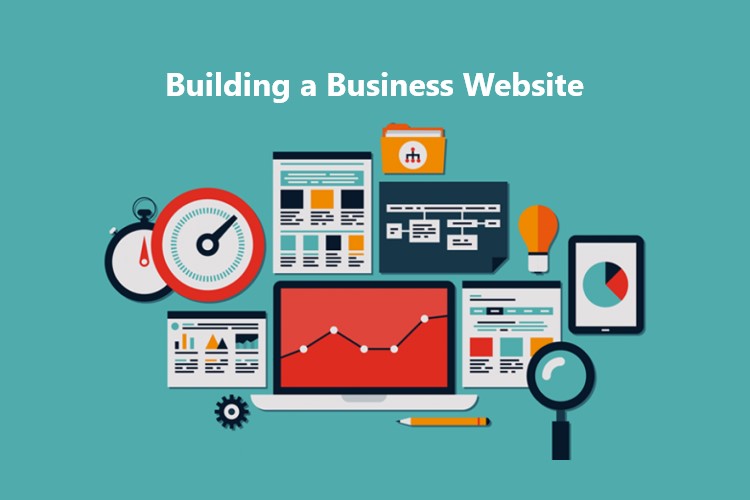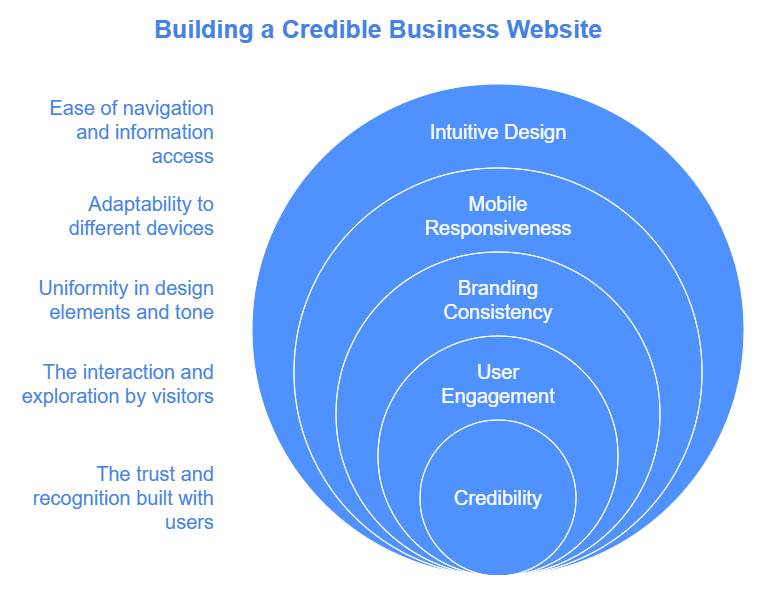
Beyond design, user experience and SEO elements play a significant role in helping users find and enjoy your site. With the right features and consistent maintenance, your website can remain secure, effective, and easy to navigate. Building a successful website involves understanding each element and how it contributes to your business’s growth. In the end, a strong website helps you connect with users and create meaningful online experiences.
Defining Goals and Purpose
When building a business website, defining clear goals and purpose is essential. Knowing the primary objectives of your website—whether for lead generation, sales, or brand awareness—guides its design and functionality. If you want to capture leads, for example, integrating forms and calls to action on key pages can drive visitors to take action. If sales are the goal, an intuitive product page and a streamlined checkout process are priorities.
Establishing these objectives upfront helps you create a website that not only looks good but functions effectively. A clear purpose also keeps your messaging focused and consistent. This way, visitors quickly understand what you offer and how it benefits them. Without clear goals, the website risks becoming a mix of elements that fail to support your business needs.
Your goals should shape not only the content but also the site’s structure and features. For instance, if you’re aiming to boost brand awareness, an engaging blog section and a visually compelling homepage may be key. Taking the time to define goals from the start saves time and resources down the road.
Choosing the Right Platform
Selecting the right platform is a key step in building a business website. Each platform offers different strengths, so choosing one depends on your specific needs and resources. WordPress is a popular choice for its flexibility and extensive plugin options. It’s ideal for those who need customization and control. However, WordPress may require some technical skills, especially for advanced features. If you have a larger team or budget, this platform can scale with your business, supporting e-commerce, blogging, and much more.
Wix is another option, particularly for small businesses or those without coding experience. It offers an intuitive drag-and-drop editor, making it easy to build and edit your website. Wix can work well for simple websites or portfolios, but it has limitations with complex functionalities. Additionally, scaling on Wix may require extra costs, which can add up over time.
Shopify, on the other hand, is highly recommended for e-commerce-focused businesses. Its platform is designed specifically for online stores, with integrated payment processing and inventory management tools. Shopify’s ease of use and dedicated support make it a popular choice for retail businesses. Yet, it may lack the design flexibility of WordPress or the simplicity of Wix for non-e-commerce sites. Ultimately, knowing your technical abilities, future growth plans, and website needs can help you select the best platform for your business.
Design and User Experience (UX) Best Practices
When building a business website, design and user experience (UX) play a big role in how visitors interact with your brand. Intuitive design makes it easy for users to find information quickly. Clear navigation, straightforward layouts, and well-organized content keep users engaged. When users feel comfortable on your website, they’re more likely to stay and explore what you offer.
Mobile responsiveness is also essential. Many people browse on their phones, so your website should look good and work well on any device. A responsive website adjusts automatically to different screen sizes, which prevents frustrating scrolling or zooming. A smooth mobile experience builds trust and credibility, showing users that you care about accessibility.
Branding consistency adds another layer to a great user experience. Using the same colors, fonts, and tone throughout your website reinforces your brand identity. Consistent branding helps users recognize and remember your business. It also creates a cohesive experience that feels professional. With intuitive design, mobile responsiveness, and clear branding, you create a website that supports user engagement and builds credibility for your business.
Essential Features for a Business Website
When building a business website, including essential features helps visitors find what they need and encourages them to take action. A contact form, for instance, is a simple but effective way for potential clients to reach you directly. It provides an easy channel for inquiries, requests, or support, making your business more accessible.
Another key feature is a blog. A blog allows you to share industry insights, updates, or tips relevant to your audience. Regularly updated content can improve your website’s search engine ranking and keep visitors engaged. Service or product pages are equally important. These pages should give clear descriptions, benefits, and any additional information that helps users understand your offerings and make informed decisions.
Social media integration is also beneficial. By linking your social accounts, you give users a way to connect with your brand on multiple platforms. This feature encourages interaction and builds brand awareness. Finally, a clear call-to-action (CTA) is essential on every page. Whether prompting users to “Contact Us” or “Shop Now,” CTAs guide visitors toward desired actions. Together, these features help you create a website that not only supports your business goals but also adds value for your users.
Search Engine Optimization (SEO) Essentials
When building a business website, optimizing it for search engines is essential for visibility and organic traffic. One of the foundational elements is keyword strategy. By researching and using relevant keywords in your content, you help search engines understand what your pages offer. This makes it easier for potential customers to find you when they search for related topics or services.
Meta tags, including meta titles and descriptions, are also important. These short snippets tell search engines what each page is about and help improve click-through rates from search results. Adding unique, descriptive meta tags for each page provides context and draws users to your site.
Site speed is another factor that impacts both user experience and SEO. Fast-loading pages reduce bounce rates and keep visitors engaged. Search engines prioritize fast websites, which can improve your ranking. Mobile-friendliness is equally important, as many users now browse on mobile devices. A mobile-responsive website adapts to various screen sizes, offering a seamless experience on all devices. With a focus on these SEO essentials, you can create a website that ranks well, attracts organic traffic, and supports your business goals.
Website Maintenance and Security
When building a business website, ongoing maintenance and security are essential to keep it running smoothly and safely. Regular updates to software, themes, and plugins help prevent compatibility issues and security vulnerabilities. By staying current, you protect your site from potential threats that can arise from outdated components.
Backups are another key part of website maintenance. Regularly backing up your website ensures you can restore it quickly in case of unexpected issues. Whether from a cyberattack or a system error, having a recent backup minimizes downtime and protects your data. Many hosting providers offer automated backups, but it’s wise to maintain additional backups independently.
Security practices like strong passwords, firewalls, and anti-malware tools also help safeguard your website. These measures protect both your business and your customers’ information. Monitoring for unusual activity and applying security patches promptly reduces the risk of data breaches. Consistent maintenance and robust security practices help you build a reliable, secure website that supports your business and provides a safe user experience.
Conclusion
Building a business website requires careful planning, from defining goals to ensuring consistent maintenance. By choosing the right platform, you set a solid foundation tailored to your business needs. Implementing essential design and UX practices keeps users engaged, while SEO helps your website reach a wider audience. Essential features, such as contact forms and CTAs, guide visitors toward meaningful actions, supporting your business goals.
Maintaining a secure, updated website builds trust and protects valuable data. Each part of this process contributes to a website that is professional, engaging, and reliable. With these practices, your business website can effectively represent your brand and meet your audience’s needs. The result is a website that not only functions well but also adds real value to your business.


